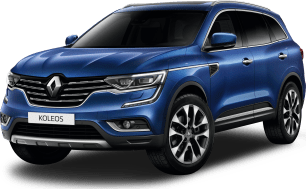The Golf R weighs in at 1517kg and Volkswagen says it will accelerate from 0-100km/h in 4.6sec, which is quick, and the car’s broad torque band makes it super-usable. The maximum 420Nm is available from 2100rpm all the way to 5500rpm.
A blue ‘R’ button on the steering wheel is your short-cut access point to various modes - ‘Eco’, ‘Comfort’, ‘Sport’, ‘Sport+’ and ‘Race’ - and in the racier settings what VW calls ‘Turbo Pre-load’ steps in. More or less an anti-lag set-up for smoother power delivery.
Even from low revs in a (manually-selected) high gear, squeeze the throttle and it quickly builds up a head of steam. Power delivery is impressively linear.
The transmission is super slick and manual shifts are rapid. Refreshingly, manual mode is exactly what it says on the tin. Select a gear with the wheel-mounted paddles and it will stay in that ratio until the rev limiter makes its stuttering presence felt.
And if you’re going into a corner under brakes just keep the left-hand paddle pulled in and the transmission will automatically cycle down to the lowest ratio available, which is handy if you’ve really got the bit between your teeth.
Even with the standard exhaust, once you’ve dialled up the sporty modes, you get that snap, crackle and pop on full-bore upshifts and on the over-run, which also enhances the experience.
Suspension is by struts at the front and multi-links at the rear, and the ‘Adaptive Chassis Control’ system monitors acceleration, braking and steering to fine-tune the set-up.
We drove on some rough B-road sections, in the wet, and the R remained surprisingly refined. Given how hard it grips and how much it communicates back through the seat of the pants it is a comfortable touring car. It’s like a GT in hatch form, eating up the kilometres without fuss or putting too much stress on the driver.
Worth noting we spent much of our time in ‘Nürburgring’ mode, accessed through the Race menu, which, no surprise, was developed on the famous Nordschleife. It’s tuned to optimise dynamic performance on undulating patchy surfaces and is a superb set-up sweet spot for the road and track.
Progressive ratio steering delivers good road feel without too many jitters coming up to your hands. And turn-in is precise without being jagged. Just point the car and it goes exactly where you want it to.
The drive system splits torque between the front and rear axles and across the rear. If, for example, it senses the car wants to turn more but might push into understeer, it calmly manages drive distribution to keep everything under control.
Tyres are Bridgestone Potenza S005 (235/35) and over even coarse chip surfaces they remain quiet and grip with admirable determination.
Braking is by ventilated discs all around and on twisting backroads we occasionally leant on them hard and they were well up to the task. A firm pedal with progressive application when getting on or easing off the brakes.
They even stood up to a race circuit pressure test without raising a sweat, because day two of the launch included a track session at Sydney Motorsport Park. And we can confirm the car is properly fast, balanced and predictable in that environment.
SMP’s dipping, then uphill, off-camber right-hand turn four highlighted the R’s grip and the sophistication of its torque vectoring set-up. We also went sliding on the skid pan in the car’s Drift mode, which biases the rear axle, and is huge fun.
In terms of lower speed manoeuvring, you’ve got a 12-metre turning circle, which isn’t vast but isn’t tiny, so be ready for that.
You’ve also got a 360-degree overhead view, which is very handy in tight spots. And if you want some extra support, ‘Park Assist Plus’ will help you slot the car into the space you’re aiming for.
Under the heading of miscellaneous observations, the sports front seats deliver solid lateral support yet remain comfortable over long periods behind the wheel.
Speaking of the wheel, it’s just the right thickness, with perforated leather at the quarter-to-three positions helping with that lovely connection to the front tyres.
As well, from an ergonomic point-of-view, working through the central multimedia screen and driver’s display is straight-forward, with the latter able to be configured via the steering wheel.











.png)











































.png)




















 copy.png)














